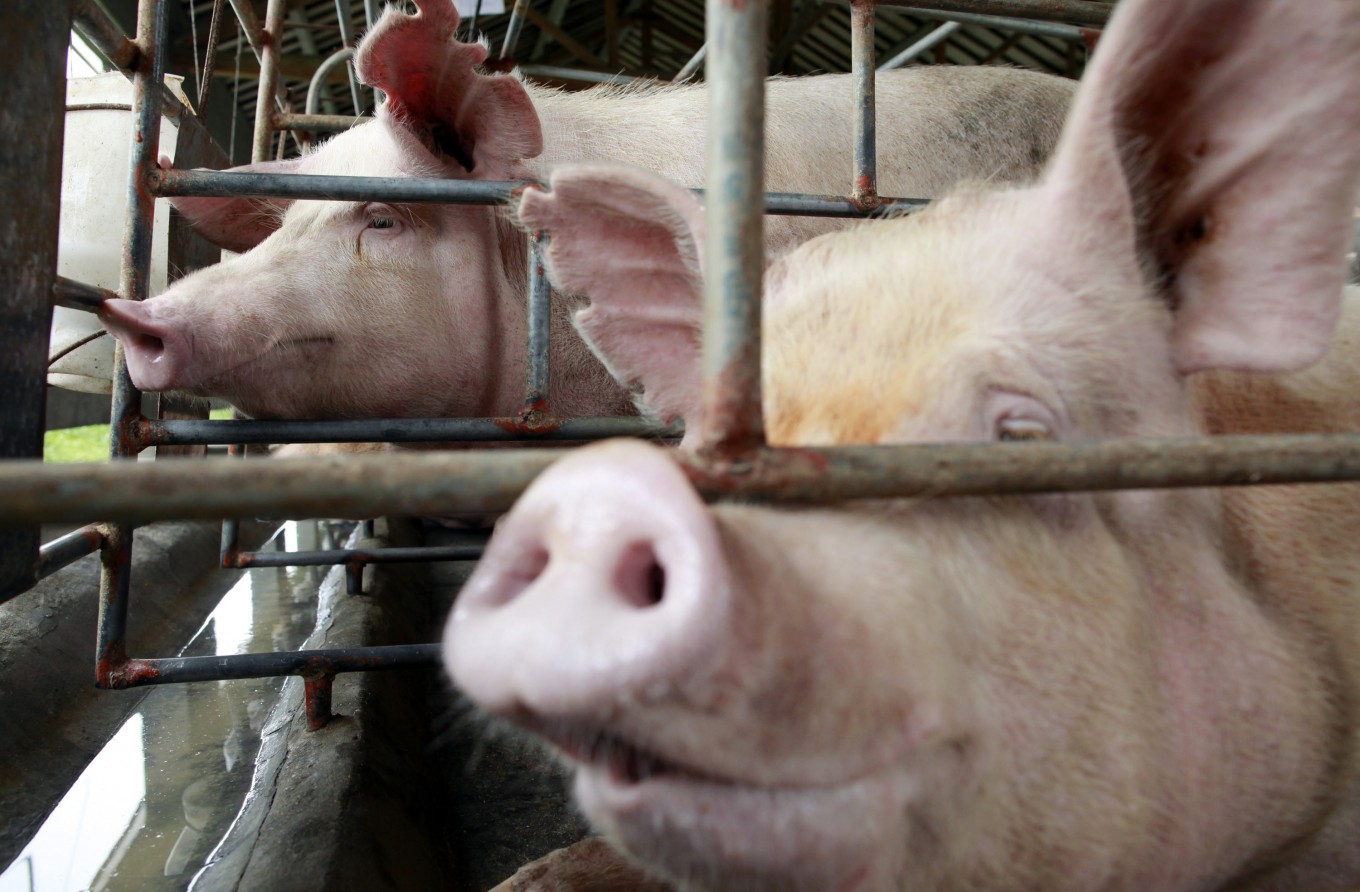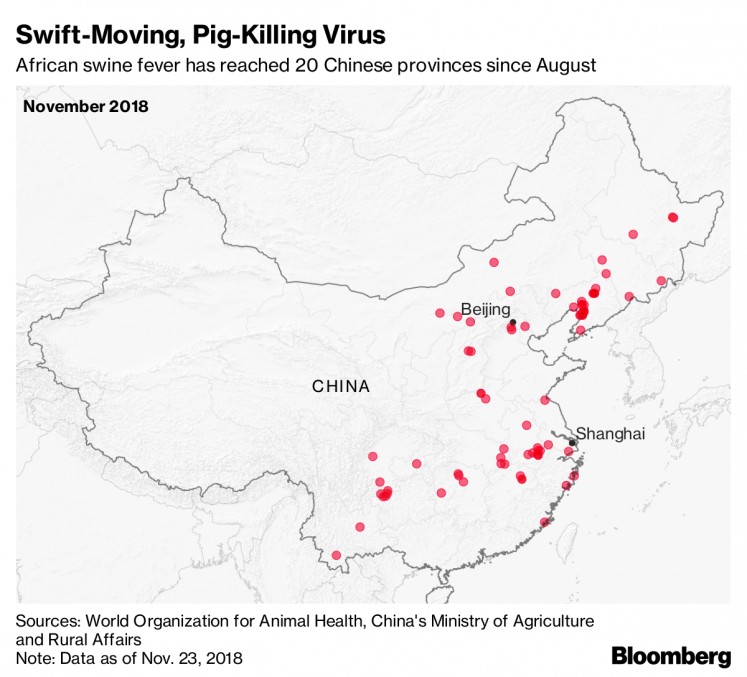Killer pig virus nears major China cities as spread quickens
A killer pig virus that began spreading in China four months ago has picked up pace , causing at least one fresh outbreak on average a day this month and encroaching on major cities including Beijing and Shanghai.
Change Size
 At least 20 provinces covering most of China’s northeastern, eastern and central areas have reported pigs infected with African swine fever, which isn’t known to harm humans but typically causes hogs to die within days. Authorities have stepped up surveillance around border areas after the disease was found close to North Korea, Myanmar, Vietnam and Laos. (Bloomberg/File)
At least 20 provinces covering most of China’s northeastern, eastern and central areas have reported pigs infected with African swine fever, which isn’t known to harm humans but typically causes hogs to die within days. Authorities have stepped up surveillance around border areas after the disease was found close to North Korea, Myanmar, Vietnam and Laos. (Bloomberg/File)
A
killer pig virus that began spreading in China four months ago has picked up pace, causing at least one fresh outbreak on average a day this month and encroaching on major cities including Beijing and Shanghai.
At least 20 provinces covering most of China’s northeastern, eastern and central areas have reported pigs infected with African swine fever, which isn’t known to harm humans but typically causes hogs to die within days. Authorities have stepped up surveillance around border areas after the disease was found close to North Korea, Myanmar, Vietnam and Laos.
About 600,000 pigs have been culled to stem the disease, which threatens to disrupt China’s $128 billion pork industry. The presence of the virus in commercial, backyard and wild pigs, as well as evidence that infected animals have entered food supply chains, “indicate a significant challenge ahead to achieve eradication,” Matthew Stone, a deputy director general of the World Organization for Animal Health in Paris, said in an email.
Veterinary officials met in Beijing last week to assist neighboring countries prepare for possible further international spread, especially through the informal movement of pigs, pork products and contaminated food that may be used as livestock feed. Even with strict quarantine and provincial pig-transportation controls, the virus has managed to travel thousands of kilometers across China, which accounts for half of the world’s swine herd.
‘Same Risks’
“There’s still no theory as to why it has spread despite the ban on movement,” said Wantanee Kalpravidh, the Bangkok-based regional manager of Emergency Centre for Transboundary Animal Diseases with the United Nations Food and Agriculture Organization. “It’s a concern for countries in the region because we share the same risks even though there’s no official import and export between some countries.”
The proliferation of the disease has spurred China to buy U.S. pork again even though the meat is subject to retaliatory tariffs imposed as part of the trade war. China was the third-largest buyer of pork in weekly U.S. government data released Thursday. The purchase of 3,300 metric tons was the most since February, before China imposed the tariffs.
Almost half of the outbreaks in China are spread via vehicles and hog traders, while about a third come from contaminated swill, Huang Baoxu, deputy head with China Animal Health and Epidemiology Center, told reporters last week.
The virus can survive for a month in pepperoni and salami, for 140 days in Iberian cured pork products and for 399 days in Parma hams, scientists found. That means pigs can become infected if they eat contaminated food scraps.
“In the end, there is not much anybody can do to stop it,” said Dirk Pfeiffer, a professor of veterinary medicine and life sciences at City University of Hong Kong. “They are trying the best they can,” he said, adding the measures implemented may be costly.
 Pig-killing virus (Bloomberg/File)
Pig-killing virus (Bloomberg/File)

Prompt Response
Reports by China’s veterinary authorities of disease outbreaks to the World Organization for Animal Health, or OIE, have been “very frequent and prompt, and reflect a strong commitment to transparency and a huge mobilization of emergency response resources towards detection and control of African swine fever,” the OIE’s Stone said.
Infected pigs have been reported on farms in areas close to major cities, including Beijing, Shanghai, Chengdu, and Kunming this month, according to reports to the OIE. A wild boar infected with a different strain to the dominant variant circulating in China was detected in Jilin province, less than 30 kilometers (19 miles) from the border with North Korea, in mid November.
The continued spread of the disease is leading to increased pig-slaughter, transport bans and volatile prices, Rabobank said in a report this week.
“Given the sheer size of production and the fragmented structure, it will be a great challenge for China to control the disease spreading in the coming year,” said Angus Gidley-Baird, an analyst with the Dutch bank in Sydney. “While culling of pigs as a consequence of infection is not significant in the context of total pig population, the ban on live hog transportation is the greater cause of market volatility.”
Lower pork consumption in China will spur demand for other sources of animal protein, including eggs, poultry, beef, mutton and seafood, Gidley-Baird said. Poultry my benefit the most since it’s a major substitute for pork, particularly in meat processing and catering, and also because poultry is widely accepted by all consumer groups in China, he said.









